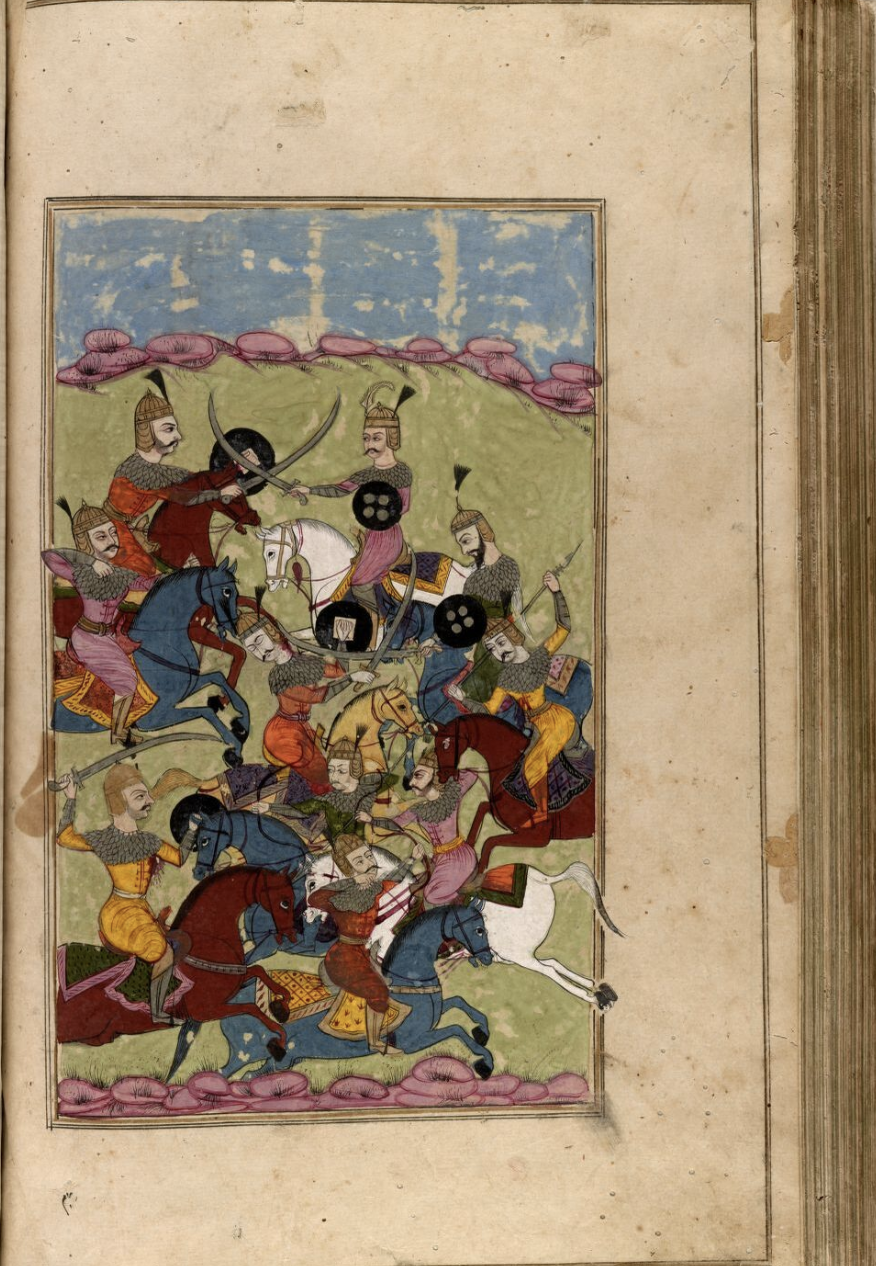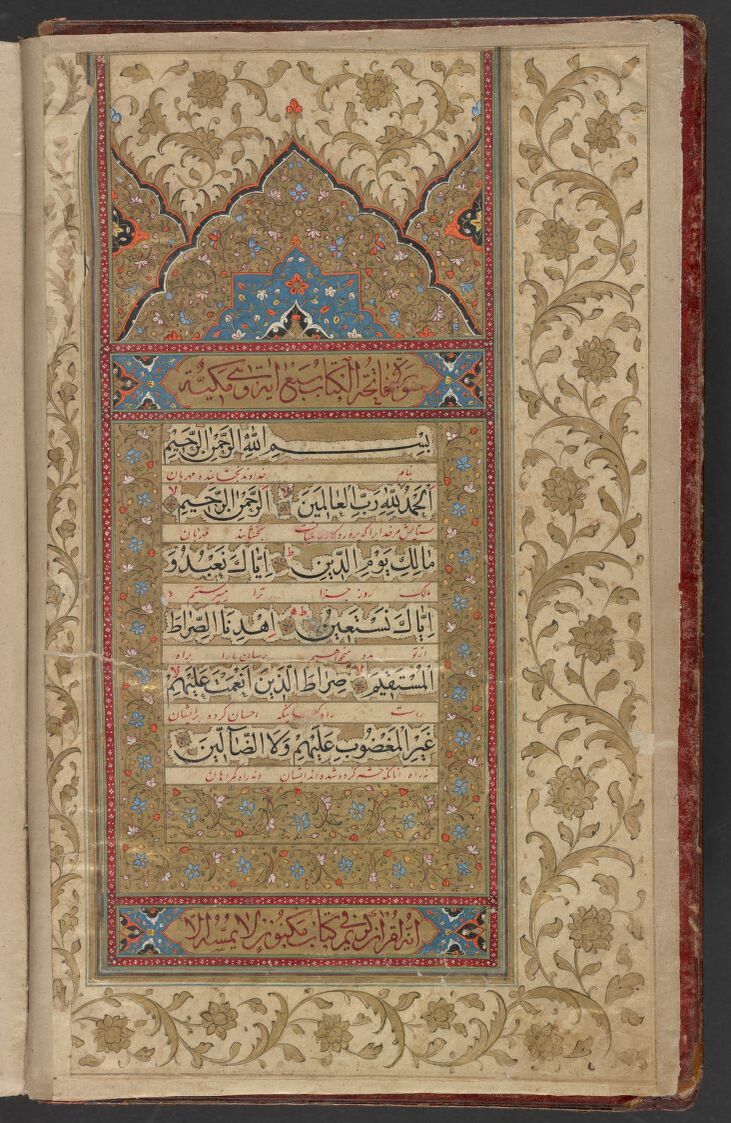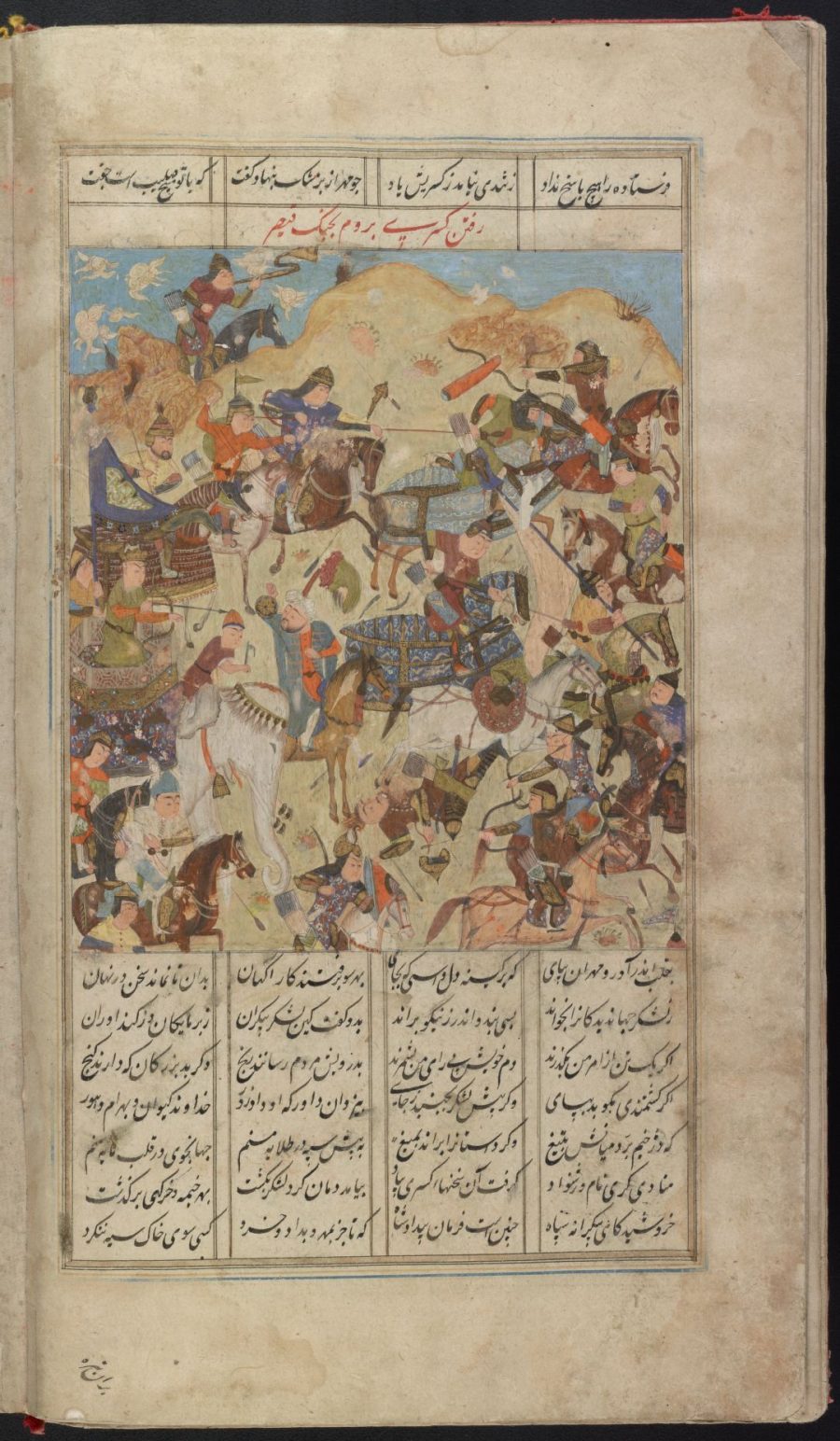
Too often those in power lump thousands of years of Middle Eastern religion and culture into monolithic entities to be feared or persecuted. But at least one government institution is doing exactly the opposite. For Nowruz, the Persian New Year, the Library of Congress has released a digital collection of its rare Persian-language manuscripts, an archive spanning 700 years. This free resource opens windows on diverse religious, national, linguistic, and cultural traditions, most, but not all, Islamic, yet all different from each other in complex and striking ways.
“We nowadays are programmed to think Persia equates with Iran, but when you look at this it is a multiregional collection,” says a Library specialist in its African and Middle Eastern Division, Hirad Dinavari. “Many contributed to it. Some were Indian, some were Turkic, Central Asian.” The “deep, cosmopolitan archive,” as Atlas Obscura’s Jonathan Carey writes, consists of a relatively small number of manuscripts—only 155. That may not seem particularly significant given the enormity of some other online collections.
But its quality and variety mark it as especially valuable, representative of much larger bodies of work in the arts, sciences, religion, and philosophy, dating back to the 13th century and spanning regions from India to Central Asia and the Caucuses, “in addition to the native Persian speaking lands of Iran, Afghanistan and Tajikistan,” the LoC notes.

Prominently represented are works like the epic poem of pre-Islamic Persia, the Shahnamah, “likened to the Iliad or the Odyssey,” writes Carey, as well as “written accounts of the life of Shah Jahan, the 17th-century Mughal emperor who oversaw construction of the Taj Mahal.”
The Library points out the archive includes the “most beloved poems of the Persian poets Saadi, Hafez, Rumi and Jami, along with the works of the poet Nizami Ganjavi.” Some readers might be surprised at the pictorial opulence of so many Islamic texts, with their colorful, stylized battle scenes and groupings of human figures.

Islamic art is typically thought of as iconoclastic, but as in Christian Europe and North America, certain sects have fought others over this interpretation (including over depictions of the Prophet Mohammad). This is not to say that the iconoclasts deserve less attention. Much medieval and early modern Islamic art uses intricate patterns, designs, and calligraphy while scrupulously avoiding likenesses of humans and animals. It is deeply moving in its own way, rigorously detailed and passionately executed, full of mathematical and aesthetic ideas about shape, proportion, color, and line that have inspired artists around the world for centuries.

The page from a lavishly illuminated Qur’ān, above, circa 1708, offers such an example, written in Arabic with an interlinear Persian translation. There are religious texts from other faiths, like the Psalms in Hebrew with Persian translation, there are scientific texts and maps: the Rare Persian-Language Manuscript Collection covers a lot of historical ground, as has Persian language and culture “from the 10th century to the present,” the Library writes. Such a rich tradition deserves careful study and appreciation. Begin an education in Persian manuscript history here.

via Atlas Obscura
Related Content:
15,000 Colorful Images of Persian Manuscripts Now Online, Courtesy of the British Library
The Complex Geometry of Islamic Art & Design: A Short Introduction
Josh Jones is a writer and musician based in Durham, NC. Follow him at @jdmagness


“Islamic art”?? LOL
But there’s no such a thing exist!
These are IRANIAN arts.
You can’t find anything like these made by non-Iranians.
In Islam art is “haram”
Nowruz is “haram” either.
Almost every Islamic Imam ordered their followers to not celebrate Nowruz, b/c it’s “HARAM”
betoche, you are an idiot
Art is not haram in Islam. Haven’t you seen the beautiful works of calligraphy and architecture that span the entire Muslim world? Not one scholar from the Shia nor Sunni schools of thought has ever banned that type of art.
There are numerous examples of calligraphy done by non-Iranian artists. Just look at the Ottoman art to see examples of it.
Also, there are some narrations, attributed to some of the 12 Imams, that speak highly of Nowrooz..
Only thing Haram here is your ignorance of arthistory
“Muslim world”???
That make no sense! It’s like: “Nazis world”, “Satan world”, “Christians world” etc, … These are not places, but thoughts, ideologies and religions! You can live anywhere and have your own religion!
But if you mean the islam occupied lands, then yes! Anywhere islam did go, it did genocide, destroyed the natives culture of the occupied lands, and replaced them with their own ideology; Ottomans also did the same thing. Unlike the 7 thousand years old country of Iran, Ottoman was just a empire/dynasty and not a specific country! Under the Ottoman empire and in their occupied lands, they hired great architects and artists to build mosques for them. Though the artists didn’t have other choice; they needed to live their life in peace and not mess with the barbaric rulers of 13th century!
By the way, the oldest mosque by the Ottomans is Hudavendigar which is probably from less than 600 years ago — while islam is 1400 years old!
Obviously Iranian arts also made by great Iranian artists!
Based on the rules of islam when a baby born in a muslim family, he/she can’t convert to other religion, otherwise the islamic rulers would order to kill him/her! The Iranian artists of 700 years ago also had no better choice than to not fight with the rulers and the society to live in peace; Even nowadays in Iran, if you don’t want to go jail or AT LEAST if you want your artwork to be let to be released in public, you need to PRAISE ISLAM (or attack Jews/Israel for example) in your artwork! NOW Imagine that you live on 13th century; Despite from to not praising islam, you’d be burned alive by the islamic rulers if you don’t convert to their religion!
If there is a word from islam (like allah) in those pieces, it doesn’t make it “islamic art”.
Right! I have seen many mosques, paintings, books, art pieces, music tracks, movies that praised islam in it! Even nowadays new groups of sly muslims are joining LGBT and feminist communities to keep their islamic propaganda alive and fresh to export it to the United States! It’s 2019, man; You can’t preach people by your swords or squeeze people’s throat and force them to convert! But everybody knows that islam is against the Nowruz the Persian new year, no matter the new muslims how hard try to say this is the religion of peace! LOL
Again! Tell me where we can find any “islamic art” or text from 1400 years ago by Muhammad or his partners from the Arabian land the source of islam?
NOWHERE!!!
Oh, and thanks for calling me “idiot” LOL
Guess it’s a part from the “religion of peace”! :))
One of readers talked about Ottoman arts and calligraphy. If you visit Istanbul you easily can see everything is written in Persian (Farsi), not one Turk can read them. So, yes, ottoman Empire hired Iranian artist to shine. So, their food and many other aspects.
I will come back to u.
Be to Che has contributed to the educational utility of his page by demonstrating the ugliness of Persian nationalism (an ideology based on the concept of the superiority of the “Aryan nation” — sound familiar?).
Be to, being Iranian does not give you the inborn right to insult the world’s Muslims. The vast majority of Muslims are not in Iran but are in Indonesia, India, etc. The branch of Islam practiced in Iran is a minority branch and I wonder if you even know anything about Sunni customs or practices. (I am saying this as a non-Iranian Shii — gasp, do such things exist?? — so I’m not insulting Shiis.)
As a remedy for, dare I say, racism and ignorance, I prescribe a long trip around the “Muslim world” (or whatever you wish to call places that Muslims have historically lived) maybe stopping at landmarks like the Alhambra. If you’re still not impressed by the art, at least the fresh air should do you good
Wonderful resource!
A lot of thanks to everybody who contributes in preparing this great site.
I belief this site will give many importan informations and benefits to every one who needs to understand the rich old Persian global civilisation.
Congratulation!
Islam made Al Alandaluz a cadlle of arts, medicine astronomy, and Jews Cristians and Arabs lived in peace.
Took science to many countries.
Persia is one of the oldest cultures of the world.
Otomans could have been destroyed by the Mongols or the Cristians but they had very strong warriors who fought beleiving their souls would be saved if they fought for Ala.
Betoche, you have lived a very sheltered life, my cousin is a very talented Islamic Artist.
What a wonderful idea, to make this rich history available online. Sadly, mush of Arab history was lost due largely to the recent war for control of oil reserves and natural resources, and these invaders showed no respect for cultural heritage, looting museums, etc. it is a sad situation, to lose your heritage. More should be done to reassemble and make these records available for careful study and online viewing.
A good start. I am hopeful that once we take the time to understand each other, we will want to build bridges instead of fighting.
A very well work done by digitising the Persian work.
Be positive and don’t discuss which is not related to the topic. Just appreciate the work which is digitised ànd available for us.
Do you know if there are any references to astronomical observations circa 1270’s in this collection. And how do I access it?
Many thanks to the Library of Congress for digitizing this collection. I look forward to more such digitizing of the book arts of the Muslim world, both by the LC and all the other major libraries and museums who have such collections. It would be wonderful if there were projects to reunite loose pages now scattered in different collections, at least virtually, through these digitized formats, so that we could be able to better appreciate the complete work of book art that originally might have been.
Hi, I have a very old persian manuscript in my family from Nezami Ghanjawi. I could provide pictures of illustrations and interested to sell.